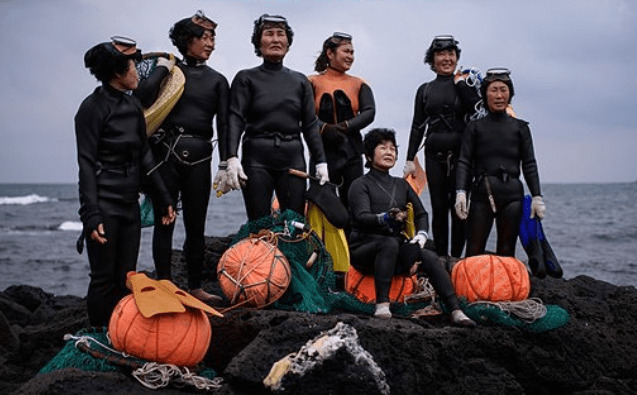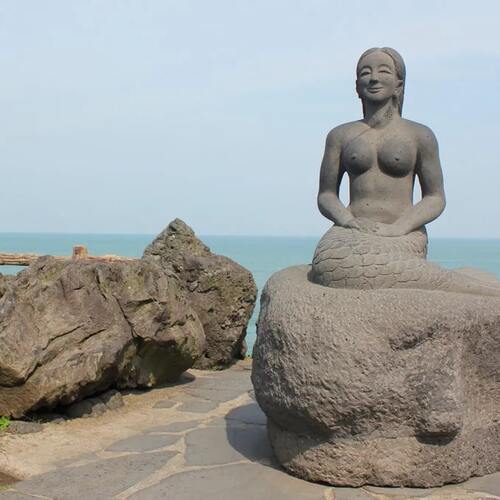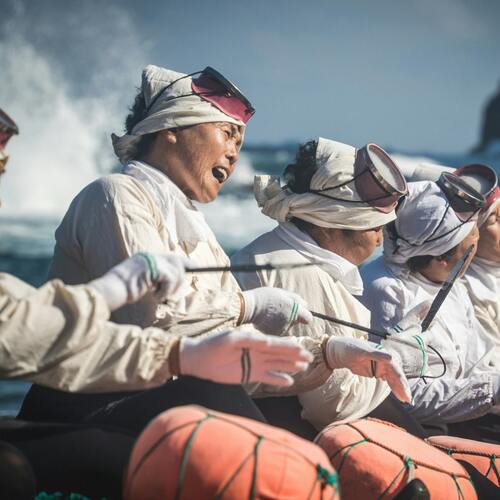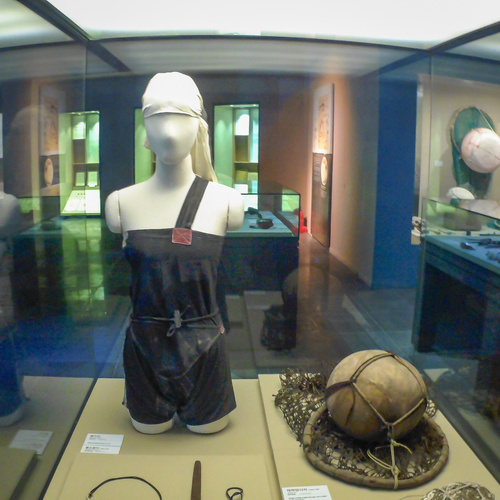Who are the Haenyeo?
Haenyeo (해녀) are women of the sea. In a South Korean tradition that dates back more than a thousand years, the women free dive to gather animals and plants and live in close union with the sea, the waves, and blizzards.
The tradition of Haenyeo dates back to at least the 17th century. It was initially a male-dominated profession, but over time, women began to dominate due to various socio-economic reasons, including wars and the necessity of men being involved in other forms of labor.
Haenyeo usually work in pairs, taking turns to dive in. They can hold their breathe up to 2 minutes as they go deep down the ocean, without scuba tanks, and dig out abalone, shellfish and more to sell at the seafood market.
The growth of the Haenyeo, female divers from Jeju Island, was significantly influenced by Japanese colonial capitalism. Originally farmers who also dived for seafood, the Haenyeo's labor became specialized due to Japan's policy of increasing seafood production around Jeju. This led to a rise in the number of Haenyeo, many of whom became migrant divers, expanding their harvesting activities across Korea and nearby regions.
In 2016, the Jeju Haenyeo were registered in the UNESCO Intangible Cultural Heritage of Humanity, marking the first time women's activities were included in the list. The Haenyeo exemplify local cultural values and represent a female profession that emerged during the colonial period, highlighting their historical and cultural importance in modern Korean history (Lee and Myong).



